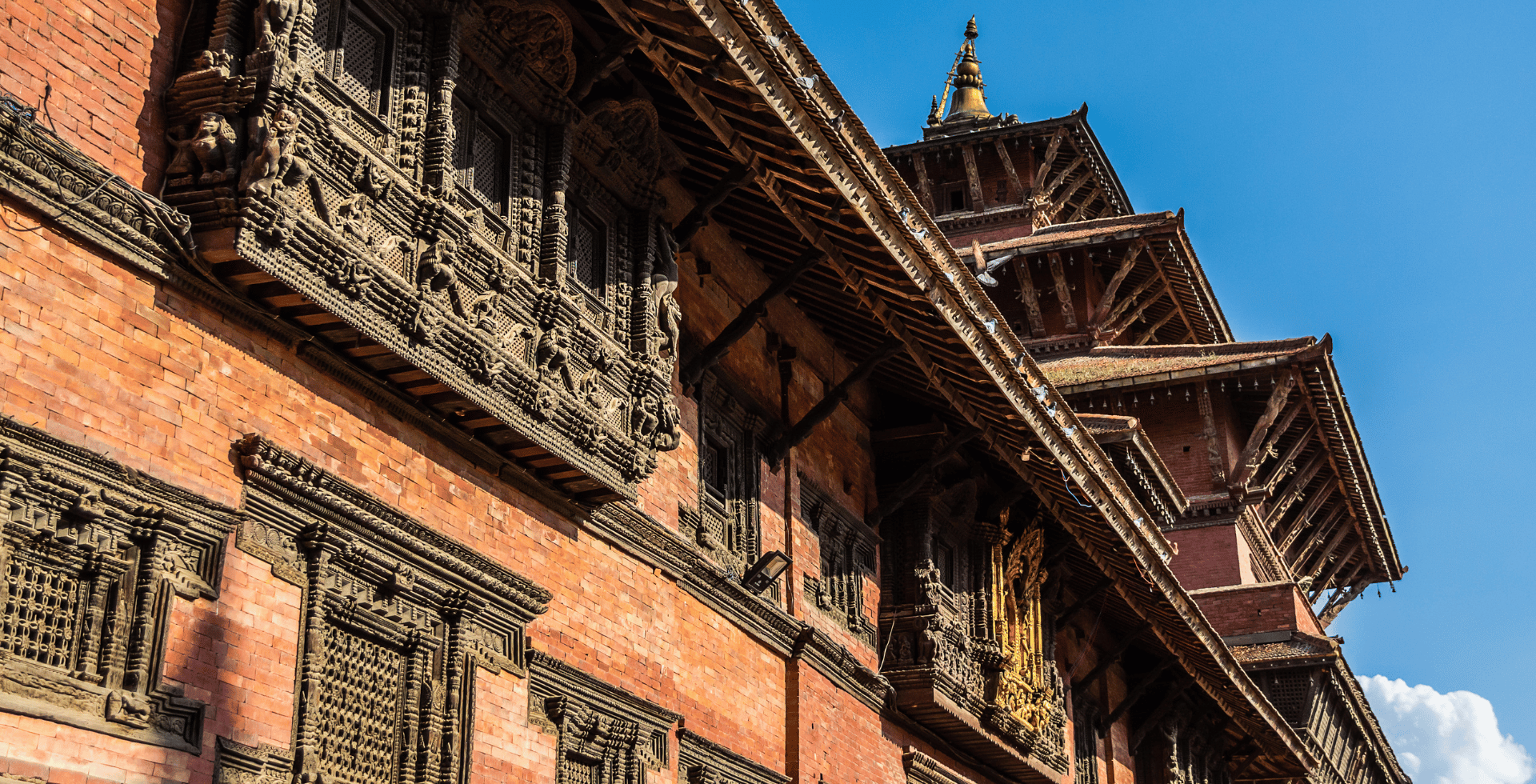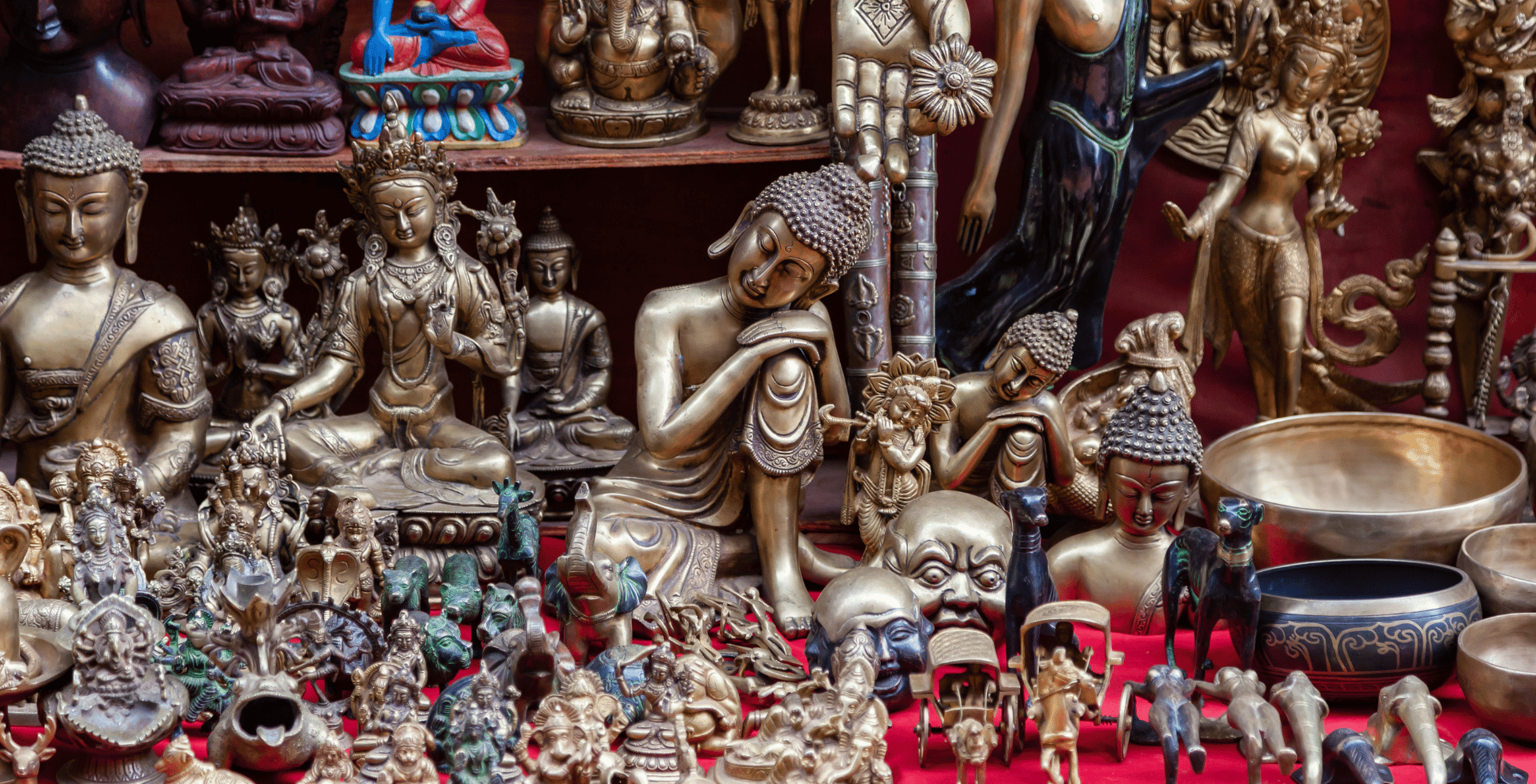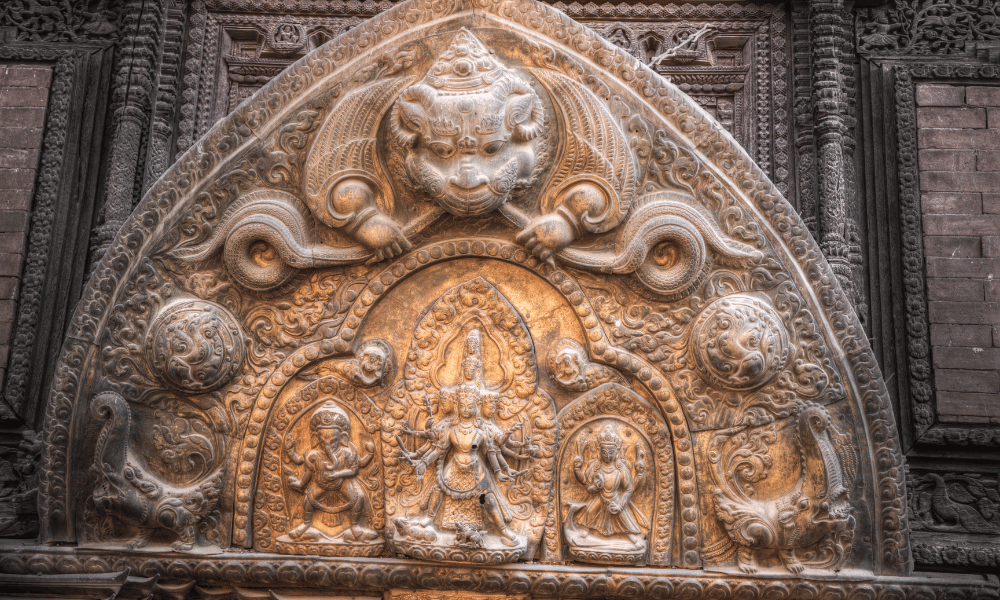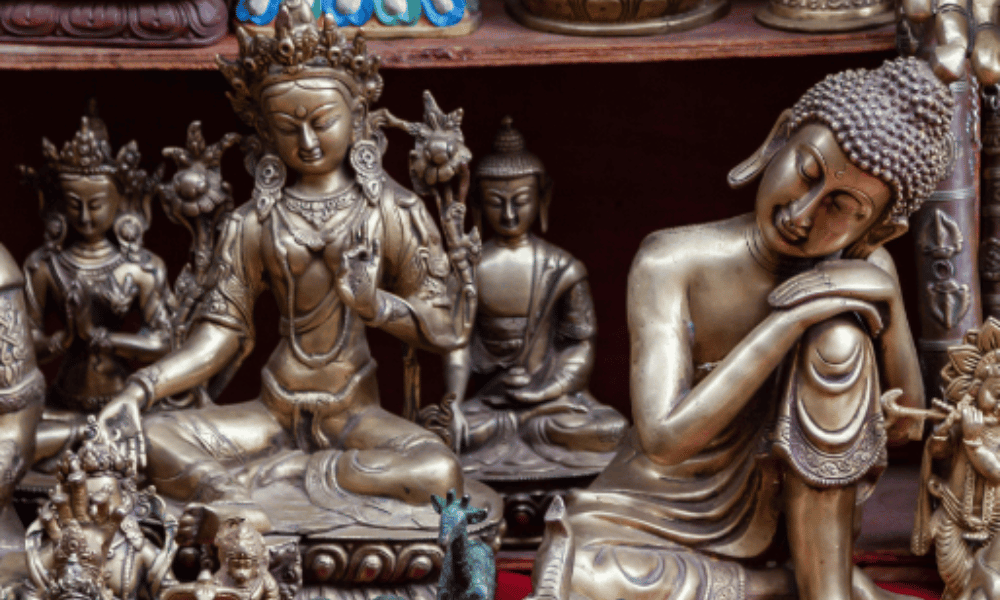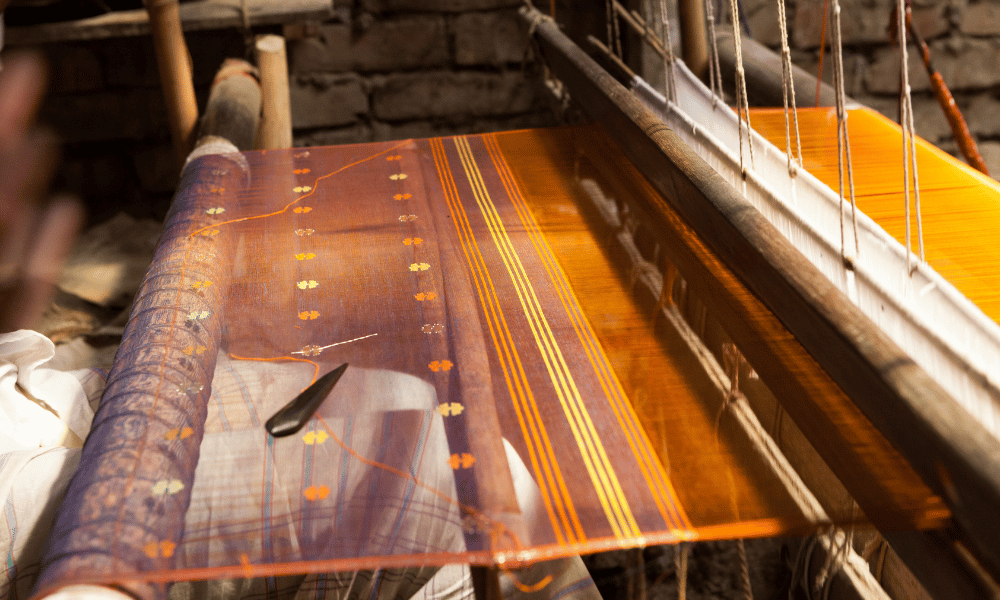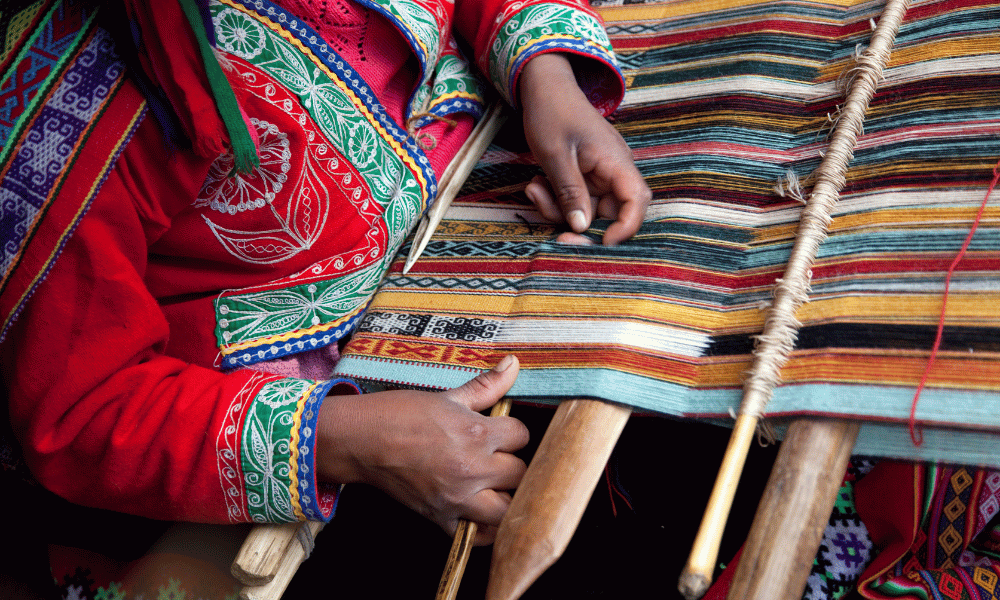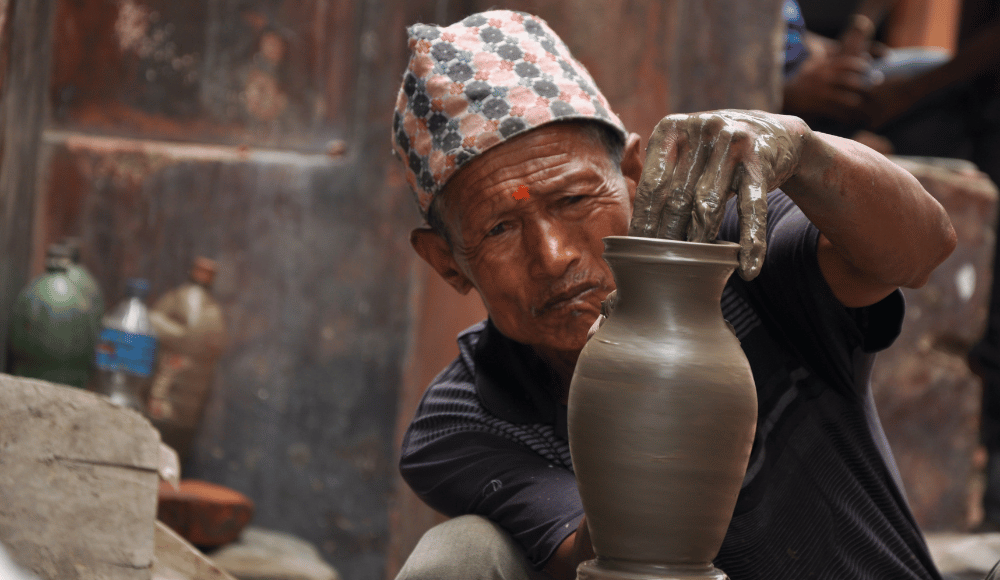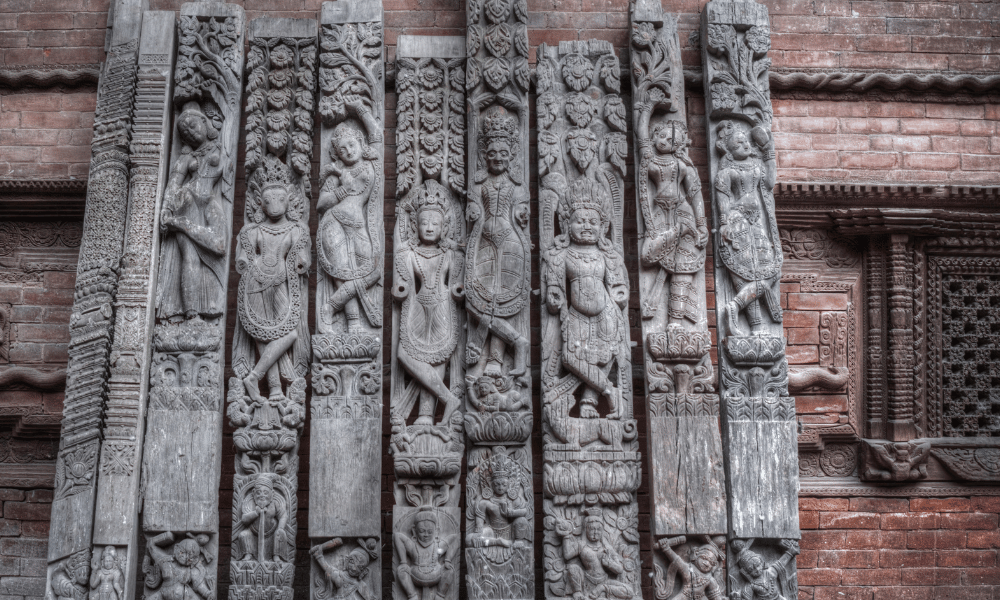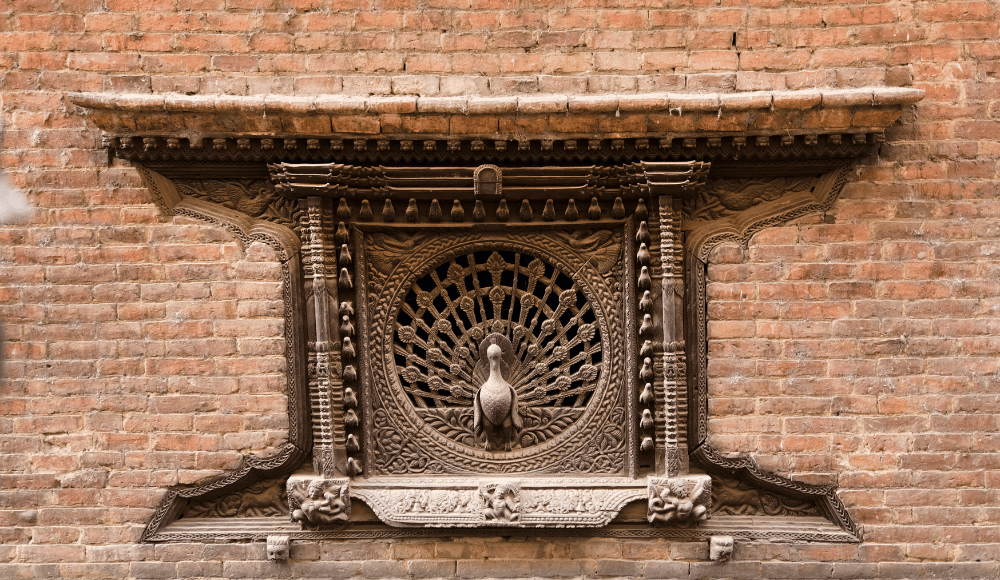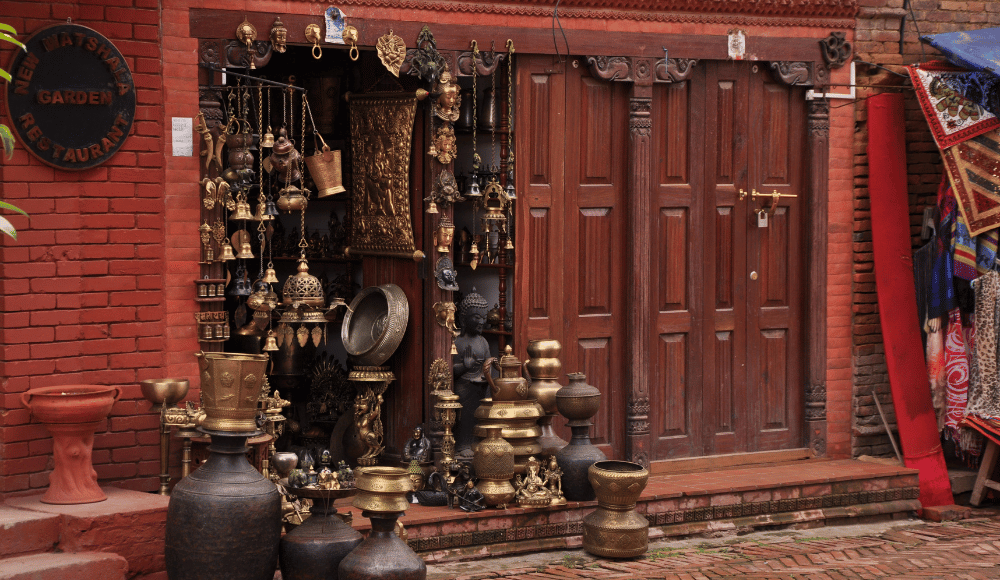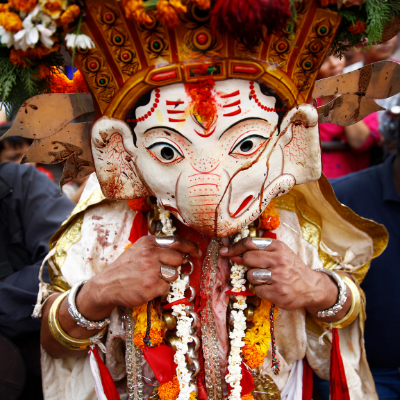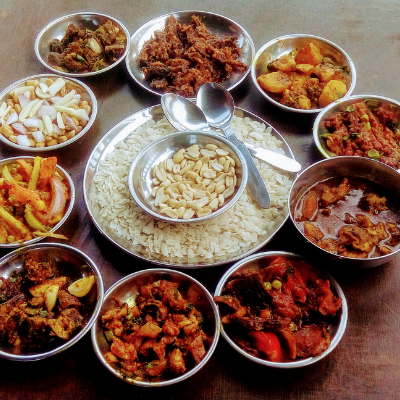Nepal's traditional painting and visual arts are deeply rooted in the country's rich cultural and religious heritage. These art forms have evolved over centuries, reflecting the diverse influences of Hinduism, Buddhism, and local animistic beliefs. The following is a detailed guideline for Nepal's traditional painting and visual arts:
A. Thangka Paintings
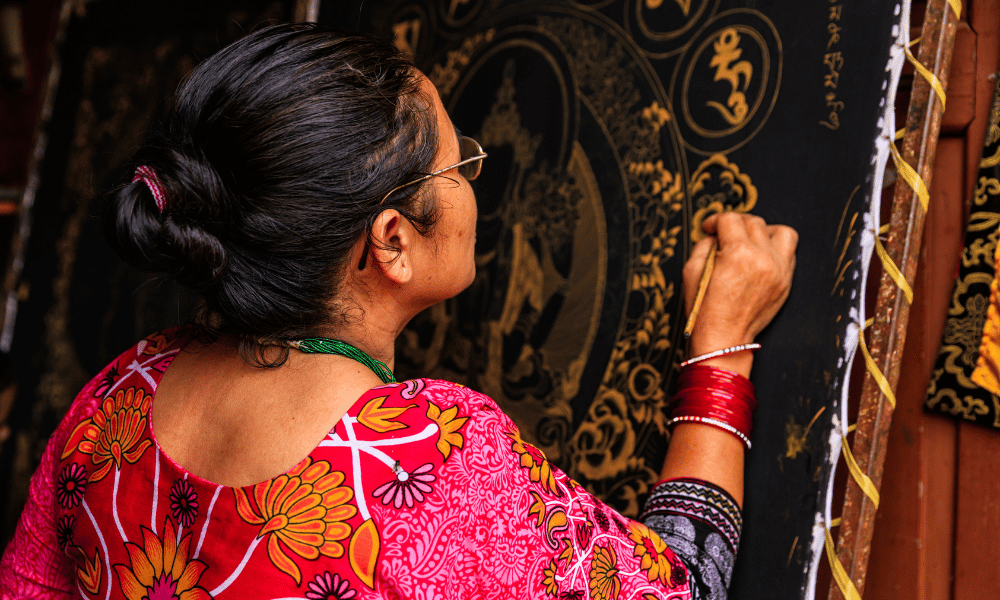
Thangka paintings are a traditional art form that originated in the Tibetan and Himalayan regions, including Nepal. Their history dates back to the 7th century when Buddhism was spreading throughout the region. Thangka paintings have both religious and cultural significance, serving as aids for meditation, and religious teachings, and as a means to honor and preserve Buddhist iconography.
Techniques, Materials, and Themes:
Thangkas are meticulously created using a combination of painting, weaving, and embroidery. Artists use natural pigments derived from minerals, plants, and sometimes, precious stones. The painting is done on a cotton or silk canvas, which is then mounted on a decorative silk brocade frame.
The themes depicted in Thangka paintings primarily revolve around Buddhist deities, scenes from the life of the Buddha, mandalas, and other religious symbols. The compositions are intricate and follow strict iconographic guidelines to ensure the accurate representation of spiritual concepts.
The Role of Thangka Paintings in Buddhist Religious Practice:
Thangka paintings play an essential role in Buddhist religious practice, serving various purposes:
-
Spiritual Aid: Thangkas are used as meditation tools, enabling practitioners to visualize the deity or sacred concept represented in the painting, thereby focusing their mind and progressing on their spiritual path.
-
Teaching Tool: Thangkas are employed by Buddhist teachers to illustrate the key principles, stories, and iconography of Buddhism, making complex ideas more accessible and engaging.
-
Protective Talisman: Thangkas are believed to hold spiritual power and protect the space where they are displayed. They are often hung in monasteries, temples, and homes to attract blessings and ward off negative energies.
-
Ritual Object: Thangkas play an essential role in religious ceremonies and rituals, including consecration, initiation, and other special events. They are often carried in processions or displayed during important religious gatherings.
Thangka paintings are an integral part of the Buddhist religious practice in Nepal and the broader Himalayan region, reflecting the region's rich cultural and spiritual heritage. Thangkas serve various purposes, from meditation aids and teaching tools to protective talismans and ritual objects, making them a vital component of the Buddhist tradition.
B. Paubha Paintings
Paubha paintings are a traditional Nepalese art form closely related to Thangka paintings, originating from the Newar community of the Kathmandu Valley. Paubha paintings date back to the 13th century, but their full extent might go back even further. They hold immense religious and cultural significance for the Newar people, who are known for their artistic skills and craftsmanship.
Techniques, Materials, and Themes:
Paubha paintings are created using similar techniques as Thangka paintings. Artists paint on a cotton or silk canvas, which is prepared by applying a mixture of buffalo glue and white clay. The canvas is then rubbed smooth with a smooth stone or glass before painting. The pigments used in Paubha paintings are derived from minerals, plants, and sometimes precious stones, ensuring their color vibrancy and longevity.
The themes of Paubha paintings are predominantly Hindu, featuring gods and goddesses, scenes from sacred texts, and religious iconography. However, some Paubha paintings also depict Buddhist deities, reflecting the religious syncretism of the Newar community.
Connection to Hindu Religious Practice:
Paubha paintings are intimately connected to Hindu religious practice in Nepal. They serve various purposes within the Hindu community, including:
-
Devotional Aid: Paubha paintings are used as focal points for prayers, meditation, and contemplation, helping devotees connect with the divine and deepen their spiritual practice.
-
Teaching Tool: Similar to Thangka paintings in Buddhism, Paubha paintings are employed to illustrate key stories, principles, and iconography within Hinduism, making them an engaging and visually appealing way to convey complex religious concepts.
-
Ritual Object: Paubha paintings often play a role in religious rituals, ceremonies, and festivals, either as objects of veneration or as part of the ceremonial decorations.
-
Preservation of Tradition: Paubha paintings contribute to the preservation of Hindu religious and cultural heritage, ensuring the continuity of the rich artistic traditions of Nepal.
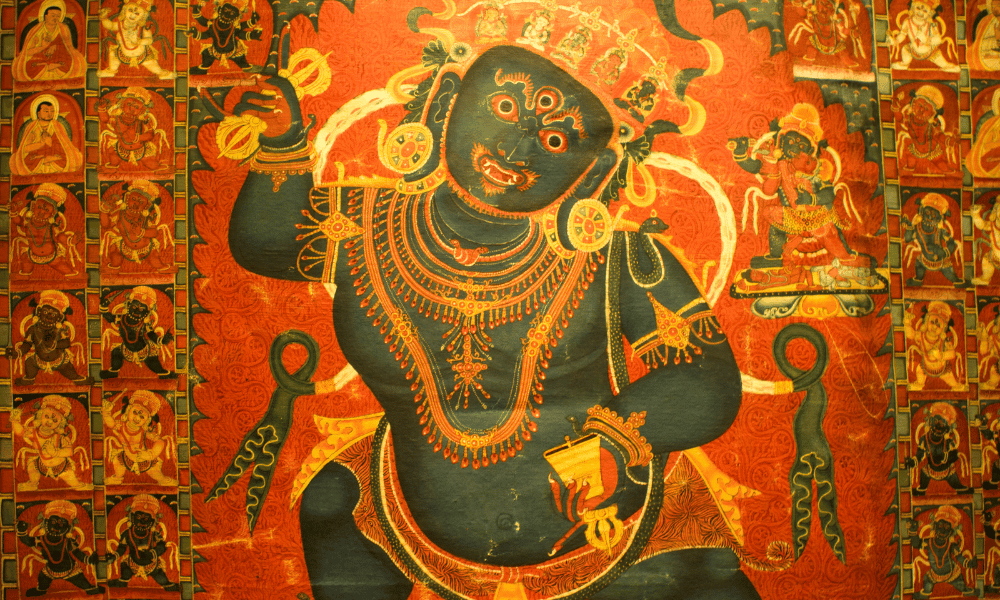
Paubha paintings are an essential aspect of Nepal's traditional art, reflecting the cultural and religious heritage of the Newar community. These intricate paintings serve as devotional aids, teaching tools, and ritual objects, playing a crucial role in Hindu religious practice in Nepal.
C. Mithila Art
Mithila art, also known as Madhubani art, is a traditional folk art form that originated in the Mithila region, encompassing parts of southern Nepal and northern India. This unique art form has been practiced for centuries, primarily by women, who passed down their skills and knowledge from generation to generation. Mithila art holds cultural and social significance, reflecting the region's beliefs, traditions, and daily life.
Techniques, Materials, and Themes:
Mithila artists use a variety of natural materials to create their paintings, such as handmade paper, cloth, or walls of their homes. They use natural dyes and pigments derived from plants, flowers, and even soot to achieve a wide range of vivid colors. Artists often employ bamboo twigs or their fingers to paint, rather than using brushes.
The themes depicted in Mithila art are diverse, encompassing religious and mythological stories, nature motifs, and scenes from daily life. The art form is characterized by its intricate patterns, geometric shapes, and stylized figures, which are often surrounded by elaborate borders.
Role of Mithila Art in Empowering Women and Preserving Culture:
Mithila art plays a significant role in empowering women and preserving culture in the following ways:
-
Women's Empowerment: Mithila art is predominantly practiced by women, providing them with a platform for self-expression, creativity, and skill development. The recognition and income generated by their art contribute to their economic independence and social standing.
-
Preservation of Cultural Identity: Mithila art serves as a visual record of the region's cultural heritage, depicting customs, beliefs, and stories that have been passed down for generations. By continuing to practice this art form, artists ensure the survival of their unique cultural identity.
-
Community Building: Mithila art fosters a sense of community and belonging among the women who practice it, creating a shared cultural experience that transcends social and economic boundaries.
-
Promoting Cultural Exchange: The growing popularity of Mithila art on the global stage has led to increased cultural exchange and understanding, as people from different backgrounds learn about and appreciate the unique artistic traditions of the Mithila region.
Mithila art plays a crucial role in empowering women and preserving the cultural heritage of the Mithila region. The practice of this traditional art form not only serves as a means of self-expression and skill development for the women who create it but also contributes to the continuity and promotion of their unique cultural identity.



